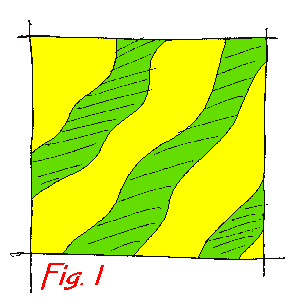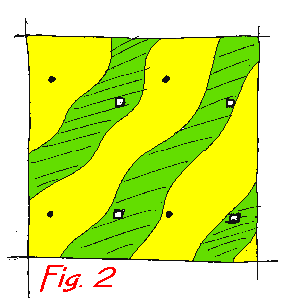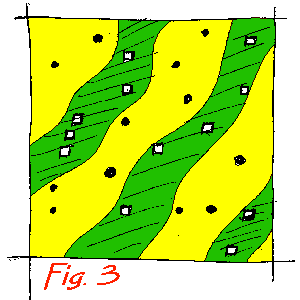 Back
to HATs
Back
to HATs
b)Quadrats - depending on size and shape, as well as number and
distribution; size will depend on sizes of plants being recorded and diversity
of habitat.
Shapes: square, rectangular, circular, hexagonal. Linear samples
(transects) and point quadrats also possible.
Could also be used for animals (especially sedentary species).
c) Capture techniques for animals:
b) Evidence from human activities:
Many of these methods are dependent on parameters in addition to
the simple abundance of the species being sampled. Thus, pitfall traps
are dependent on the level of activity of the animals as well as their
density. The indirect methods are also dependent on the intensity of the
human activities (e.g. how many hunters) and the accuracy of the records.
The particular type of statistical analysis to be applied to the data
(whether just descriptive or inferential to sort out relationships and
effects) will depend on how the data behave (patterns of errors, variability,
etc.) which in turn will be effected by the particular sampling method(s)
used to obtain the data.

Imagine that you are sampling for spiders in an environment which comprises two contrasting habitat types as in this diagram (Figure 1).
The shaded/green and clear/yellow areas have different types of vegetation and you want to use pitfall traps to sample the ground-active spiders.
You also want to use quadrats to sample the plants growing there and use these data to quantify the differences in habitat conditions corresponding to the positions of your pitfall traps (or clusters of traps).
Where should you place your pitfall traps (or clusters) and your plant-survey
quadrats?

Grid:
Samples are arranged in a regular pattern such as lines, rectangular
arrays, hexagonal patterns.
This arrangement of samples could possibly miss heterogeneous patches
in sample area; the black dots miss the shaded/green areas and the open
squares don't sample the clear/yellow areas in Fig 2.).
Depending on sample size and distribution of samples, this sampling
pattern may be inadequate.
Transects:
This is when samples are arranged in lines, not necessarily straight,
to cover range of variation in sampled area (viz. lower line of four samples
in Fig. 2).

If sample size is too small might miss out heterogeneous patches altogether
(viz. black circles or open squares in Fig. 3); even with larger sample
size might sample different patches disproportionately to their relative
areas.